The 21-day Everest Base Camp Three Passes Trek from Kathmandu’s bustling streets is nothing short of an adventure seeker’s dream. It’s not just about reaching base camp; it’s the journey through the breathtaking Khumbu region, where trekkers tackle high passes and soak in the vibrant culture of villages like Namche Bazaar. With stunning views of iconic peaks and unique wildlife experiences, it’s a trek that challenges and inspires. But what’s the secret sauce to successfully conquering those high passes and making the most of this epic trek?
Key Points

- The trek offers a 21-day journey through the stunning Khumbu region, starting from Kathmandu and culminating at Everest Base Camp.
- It includes crossing three high passes: Renjo La, Cho La, and Kongma La, providing breathtaking views of the Himalayas.
- Acclimatization days in Namche Bazaar and Dingboche help prevent altitude sickness and ensure a safer trekking experience.
- Travelers can spot diverse wildlife and enjoy Sherpa culture while enjoying local cuisine during the trek.
- Prices start around $2,089.85 per person, with a flexible cancellation policy for peace of mind.
Trek Overview and Highlights
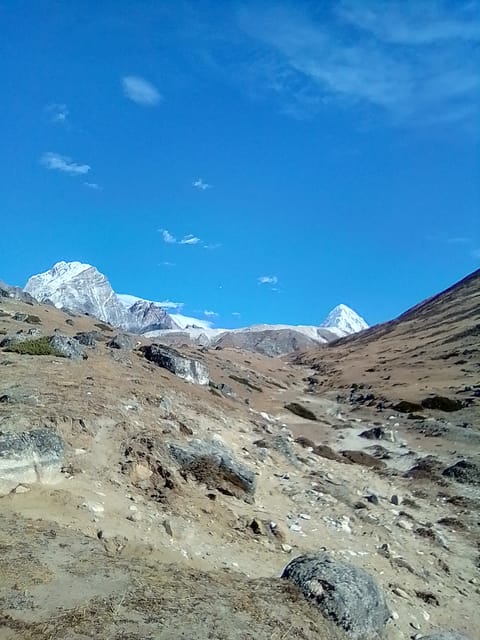
The Everest Base Camp Trek is an unforgettable adventure that packs in a challenging 21-day journey through the breathtaking Khumbu region, showcasing stunning views and incredible high passes.
Along the way, trekkers get to experience the majestic beauty of Everest, the serene Gokyo Lakes, and the vast Ngozumpa Glacier. Wildlife enthusiasts might even spot snow leopards, bears, and musk deer!
The trek includes crossing three high passes: Renjo La, Cho La, and Kongma La, each offering panoramic views that’ll take your breath away.
With prices starting from $2,089.85 per person and a flexible cancellation policy, this trek is a fantastic option for those seeking adventure.
It’s not just a trek; it’s an experience of a lifetime!
You can also read our reviews of more hiking tours in Namche Bazar Nepal
Detailed Itinerary
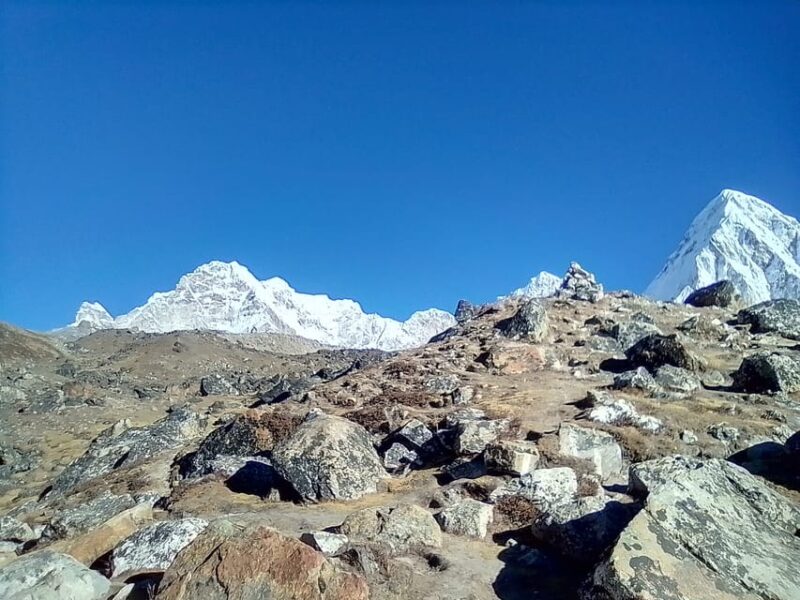
Curious about what each day of the Everest Base Camp Trek looks like? Here’s a detailed itinerary that breaks down the adventure day by day!
Day 1 kicks off with your arrival in Kathmandu, where you’ll chill at a hotel.
Day 2’s all about prep work and getting your permits sorted.
On Day 3, you’ll fly to Lukla and trek to Phakding, soaking up the views.
Day 4 leads you to Namche Bazaar, a bustling hub.
Day 5 is an acclimatization day, allowing you to explore Khumjung Village.
Days 6 and 7 see you trekking to Tengboche and Dingboche.
Day 8 provides another acclimatization opportunity, with a climb to Nangkartshang Peak.
High Mountain Passes
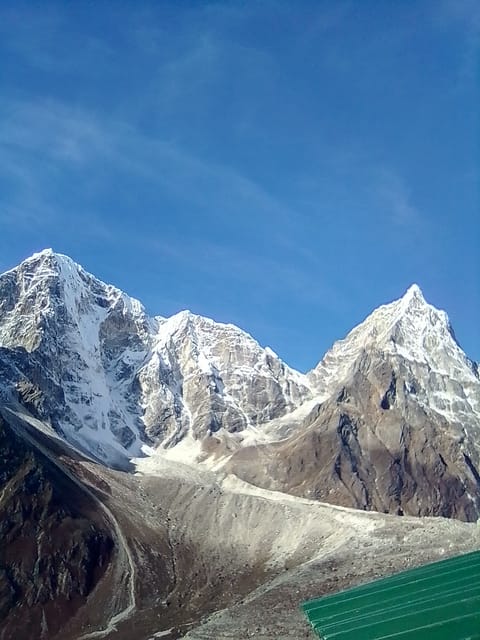
Reaching the high mountain passes on the Everest Base Camp Trek is a thrilling challenge that rewards trekkers with breathtaking views and a sense of accomplishment. Each pass offers unique experiences that make the trek unforgettable:
-
Kongma La Pass (5,535m): The first high pass, featuring a strenuous ascent and stunning panoramas of Ama Dablam.
-
Cho La Pass (5,420m): This critical link between Gokyo Valley and Everest Base Camp can require crampons and ropes in winter.
-
Renjo La Pass (5,360m): Offers incredible views of Everest and the stunning turquoise Gokyo Lakes, connecting to the charming Thame village.
Adventure awaits as these passes challenge trekkers physically while providing moments of pure awe, making every step worth it.
Acclimatization Strategies
Acclimatization is crucial for trekkers tackling the Everest Base Camp Trek, ensuring they adjust to high altitudes and reduce the risk of altitude sickness.
To make this happen, trekkers typically spend extra days in key spots like Namche Bazaar and Dingboche. These dedicated acclimatization days allow their bodies to adapt while enjoying the stunning views and local culture.
It’s also smart to take it slow—hiking higher during the day and returning to lower elevations at night helps too. Staying hydrated and fueling up with nutritious foods can make a big difference.
More Great Tours NearbyEssential Gear List
What essential gear do trekkers need to conquer the Everest Base Camp Trek and ensure a comfortable and safe adventure? Packing the right gear is crucial for tackling the diverse challenges of this trek.
Here’s a quick list of must-haves for every trekker:
-
Durable trekking boots: A good pair keeps feet comfy and blister-free.
-
Warm layers: Think base layers, insulation, and waterproof outerwear to fight the cold.
-
Sleeping bag: A high-altitude rated sleeping bag ensures warmth during chilly nights.
-
Trekking poles: These provide stability and reduce strain on the knees while navigating uneven terrain.
With this gear in tow, trekkers can focus on the breathtaking views and the thrill of the adventure ahead!
- Everest Three High Passes Trek: 17-Day Guided 3 Passes Trek
- Island Peak Climbing: – 17-Day EBC Via Island Peak Climbing
- From Kathmandu :21 Days Everest (Base Camp)Three Passes Trek
- Kathmandu: 11-Day Everest Base Camp Trek
- 7 Best Treks And Hiking Tours In Namche Bazar Nepal
- 2 Best Guided Tours In Namche Bazar
Physical Preparation Tips
Getting in shape for the Everest Base Camp Trek is crucial, as it helps trekkers tackle the challenging terrain and high altitudes with confidence and ease.
To prepare, they’d want to focus on building cardiovascular endurance through activities like hiking, running, or cycling.
Incorporating strength training, especially for legs and core, is key to handling those steep climbs.
It’s also smart to practice walking with a loaded backpack to simulate actual trekking conditions.
Flexibility exercises, like yoga or stretching, can help prevent injuries.
Ultimately, consistency is vital—gradually increasing intensity and duration will set trekkers up for success.
With the right physical prep, they’ll be ready to conquer those breathtaking passes and enjoy the stunning scenery along the way!
Cultural Insights
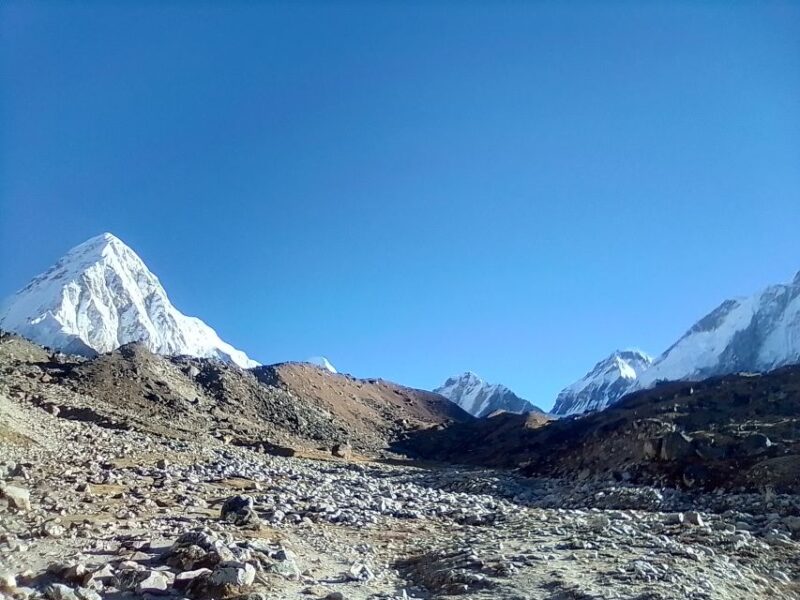
Many trekkers find that seeing the rich cultural heritage of the Khumbu region enhances their Everest Base Camp experience. From vibrant festivals to ancient monasteries, there’s so much to explore. Here are a few cultural highlights:
-
Sherpa Traditions: Learn about the unique customs and practices of the Sherpa people, known for their incredible mountaineering skills.
-
Buddhist Monasteries: Visit stunning monasteries like Tengboche, where spiritual chants echo through the mountains.
-
Local Cuisine: Savor traditional Sherpa dishes, such as dal bhat and momo, that fuel trekkers on their journey.
-
Festivals: Experience local celebrations, like the Mani Rimdu festival, which showcases traditional dance and music.
Engaging with these cultural aspects makes the trek not just a physical challenge but a memorable journey through the heart of the Himalayas.
Safety Considerations
While soaking in the rich Sherpa culture and breathtaking landscapes, trekkers should also keep safety at the forefront of their Everest Base Camp adventure.
Altitude sickness can sneak up on anyone, so acclimatization days in Namche Bazaar and Dingboche are crucial. Staying hydrated and listening to your body’s signals is key—don’t ignore those headaches!
Proper gear is non-negotiable; sturdy boots, warm layers, and a reliable first-aid kit can make all the difference.
Trekkers should also hire experienced guides who know the terrain and can handle emergencies.
Lastly, it’s smart to keep an eye on the weather, as conditions can change rapidly in the mountains.
Safety first ensures that everyone can enjoy this incredible journey!
Frequently Asked Questions
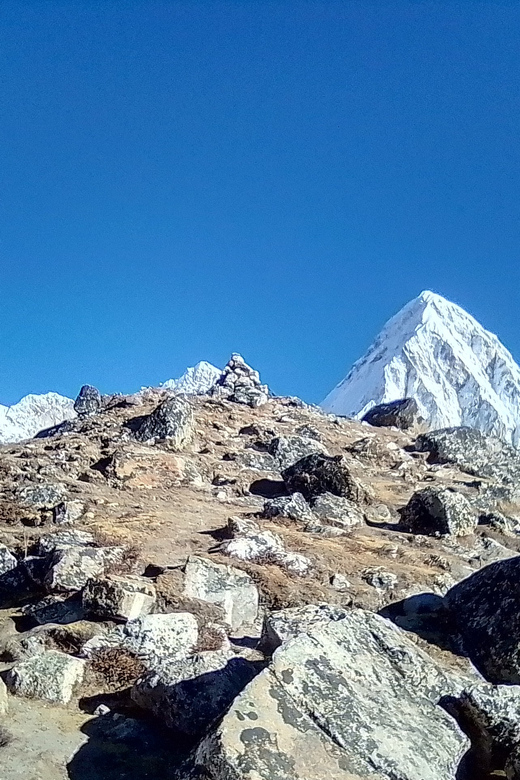
What Is the Best Time to Undertake This Trek?
The best time for this trek is typically from late September to November or March to May. During these months, the weather’s stable, the views are stunning, and trekkers can enjoy the breathtaking landscapes.
Are There Any Age Restrictions for Participants?
There aren’t strict age restrictions for participants. Most operators welcome adventurers from their twenties to sixties, as long as they’re fit enough. It’s all about having the stamina and spirit to tackle those challenging trails!
Is Travel Insurance Required for the Trek?
For this trek, travel insurance isn’t strictly required, but it’s highly recommended. It covers unexpected events, ensuring trekkers stay protected against injuries, trip cancellations, or any unforeseen mishaps along the challenging journey.
Will There Be Wi-Fi or Mobile Service During the Trek?
During the trek, connectivity’s pretty limited. While some teahouses might offer Wi-Fi, it’s spotty. Mobile service exists in larger villages, but hikers shouldn’t rely on it for consistent communication or updates along the trail.
What Type of Food Is Available Along the Trek?
On the trek, he finds a variety of food options, including local Nepali dishes, dal bhat, and international favorites like pasta and pancakes. He enjoys hearty meals, fueling his adventurous spirit amidst stunning mountain views.
Recap
In a nutshell, the 21-day Everest Base Camp Three Passes Trek is an adventure of a lifetime!
With stunning views, challenging high passes, and rich cultural experiences, it’s perfect for thrill-seekers and nature lovers alike.
Whether you’re soaking in the beauty of the Gokyo Lakes or sharing stories with locals in Namche Bazaar, every moment is bound to leave lasting memories.
So lace up those hiking boots, and get ready for an epic journey in the Himalayas!
You can check availability for your dates here:More Hiking & Trekking Tours in Namche Bazar Nepal
More Tour Reviews in Namche Bazar Nepal
- 7 Best Treks And Hiking Tours In Namche Bazar Nepal
- Kathmandu: 11-Day Everest Base Camp Trek
- Island Peak Climbing: – 17-Day EBC Via Island Peak Climbing
- Everest Three High Passes Trek: 17-Day Guided 3 Passes Trek
- From Ktm: 7 Day Everest Base Camp Trek With Helicopter Tour
- Everest Base Camp Trek – 12 Days
